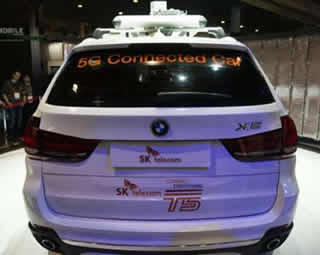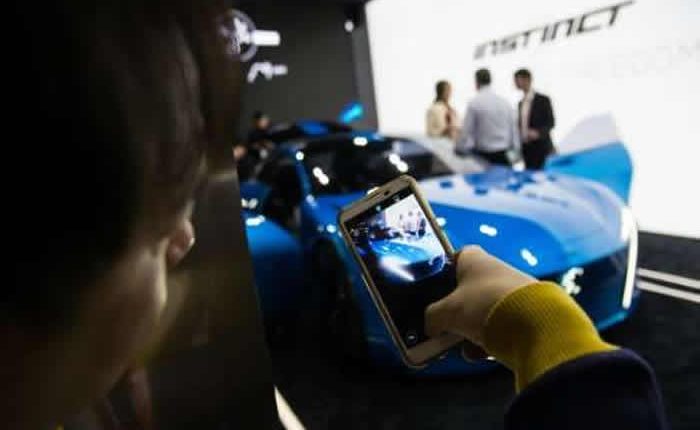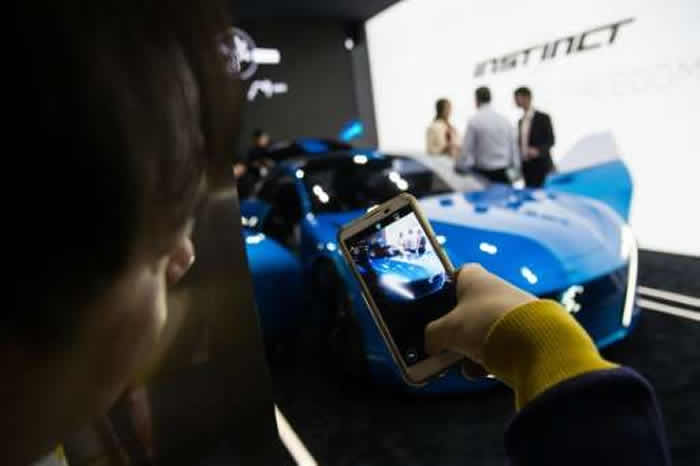Cars of the future or ‘mobile phones on wheels’?
It started off with cars driving themselves, now features of the ever so desired ‘car of the future’ will include letting you pay for petrol or parking directly from your vehicle, and send you traffic alerts and restaurant recommendations all from your on board digital assistant.
These connected cars, or maybe ‘mobile phones on wheels’ will feature these things and more. Communicating with each other on the road and with the infrastructure around them through their computer networks is yet another bonus feature.
And they will, of course, be able to drive themselves.
Prototypes, fitted with the next generation 5G wireless communications network, turned heads at the Mobile World Congress (MWC) in Barcelona.
But as the excitement and novelty over connected cars grows, vehicle, tech, and telecoms firms are struggling with how to handle the inevitable legal and ethical issues.
Add to that the risk of cyber-attack and reliability issues surrounding a fast and stable internet connection and connected cars face many obstacles before they can ever be set loose.
Jeff Massimilla, Head of Cybersecurity at General Motors, during a discussion at the MWC said: “Connected cars pose a significant risk from a cybersecurity perspective.”
This is the industry’s biggest worry: hacking.
A hacker could easily take over a car’s network and disable brakes, the transmission, or simply shut the car down.
And that worry is hardly unfounded: Connected cars were hacked in 2015 during testing.
According to data presented Monday by Masayoshi Son, chief executive of telecoms giant SoftBank, cyber-attacks against connected objects – objects with internet connectivity – have multiplied by four and five times between 2015 and 2016.
To mitigate the risks, telecoms and vehicle firms have teamed up to enhance collaboration.
“We cannot do it alone,” said Tech Executive Ogi Redzic, who heads the connected vehicles services at Renault-Nissan.
Renault-Nissan partnered with Microsoft last September, and its cars plan to use Microsoft Cortana as a digital assistant.
Three years ago, Volkswagen acquired Blackberry’s European research and development center, a group of 200 engineers, to update its connected software.
‘Bandwidth issues’
The success of connected vehicles will also hinge on the ability of an internet network to enable lightning-quick downloads or support split-second activities, such as the automatic traffic movement of driverless cars.
The current 4G standard enables fast broadband access via mobile smart phones, but government and manufacturers see the next generation enabling connection speeds of up to 1,000 times faster than current ones.
“When there will be many (connected) cars on the roads, there will be flow and bandwidth issues to make the system work,” said Guillaume Crunelle, an automotive analyst at Deloitte.
The new, fifth generation of mobile networks is expected to enable communications between cars and infrastructure, automated manoeuvres such as overtaking and braking, and emergency warning and call systems, among others.
Commercialization of 5G is not expected to start before 2020, however, as companies and governments negotiate to try to standardize norms between different countries for smooth 5G use worldwide.
“The 5G vehicle reacts swiftly in case of accident and transmits the information to neighboring cars,” said Changsoon Choi, a Senior Manager at SK Telecom.
Driverless cars will require better GPS-tracking systems and the creation of more detailed digital maps in order to avoid possible obstacles.
“In terms of infrastructure, there are enormous investments to be made so that a vehicle can communicate with a parking system, traffic lights, road signs” said Mouloud Dey, the Director of innovation and business development at analytics firm SAS.
“We still have no idea who will finance that type of thing.”
Driverless cars also pose moral and legal dilemmas.
Will vehicles be designed to protect their passengers at all costs, even if they have to plough through a crowd of pedestrians to do so?
Who will bear the responsibility of an accident? The manufacturer, the vehicle owner or the network provider?
“We show a certain leniency to human driving errors that we won’t necessarily show for a machine,” Crunelle said. “We will have to make a decision on the life and death of some.”
“I don’t know who on the regulatory level will want to take on that responsibility.”
More information: Phys.org


